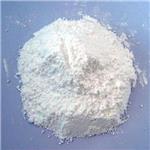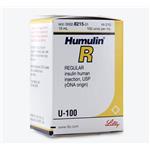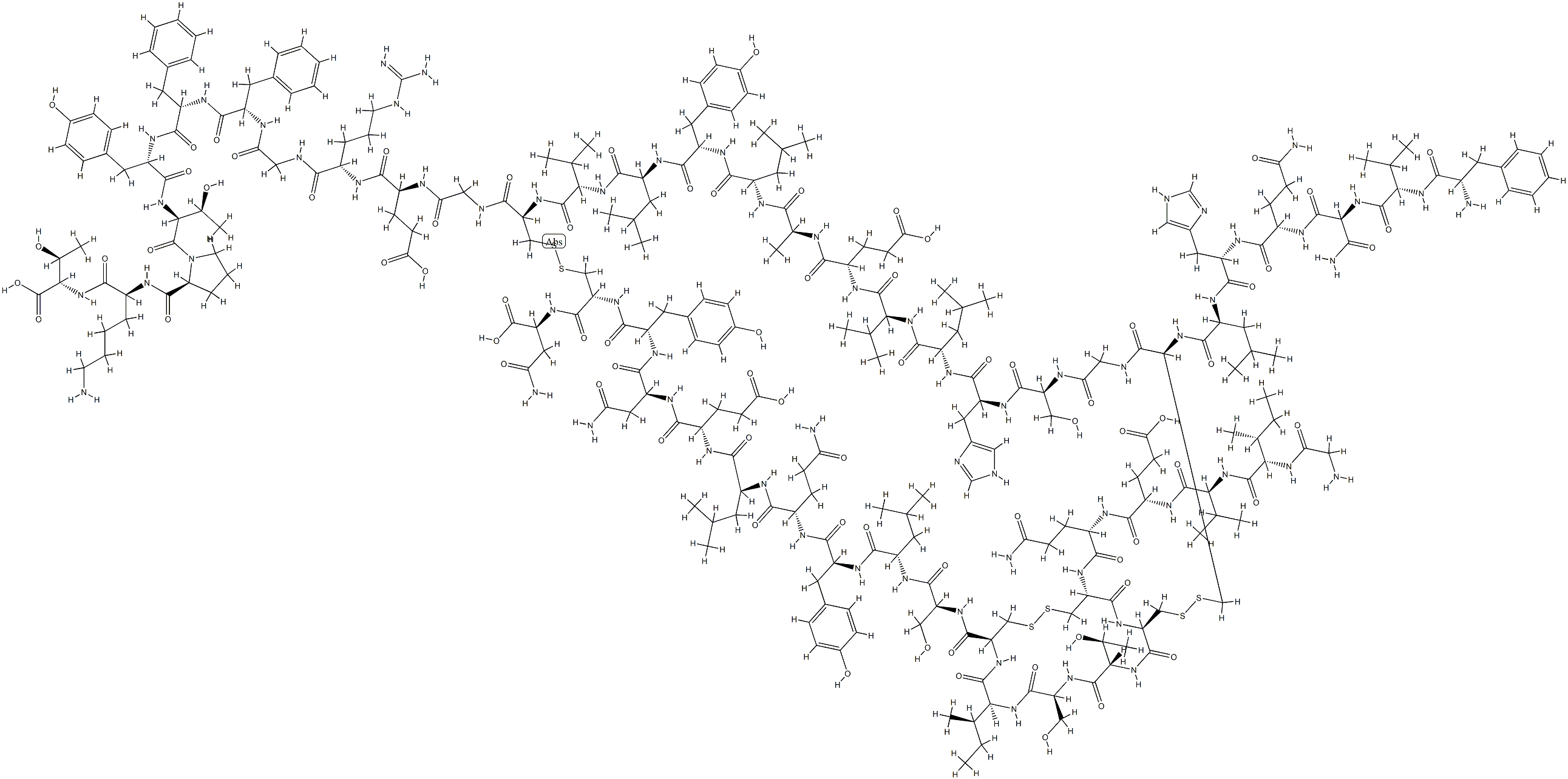- Insulin
-

- $0.00 / 1G
-
2024-09-20
- CAS:9004-10-8
- Min. Order: 1G
- Purity: 99%
- Supply Ability: 20
- Insulin
-

- $1.00 / 2kg
-
2024-07-13
- CAS:9004-10-8
- Min. Order: 10kg
- Purity: 99% Humulin R Insulin
- Supply Ability: 1000
|
| | INSULIN Basic information |
| Product Name: | INSULIN | | Synonyms: | INSULIN SODIUM SALT;INSULIN PORC;INSULIN (PORCINE);INSULIN BOVINE PANCREAS;actrapid;decurvon;endopancrine;Insuline | | CAS: | 9004-10-8 | | MF: | C256H381N65O77S6 | | MW: | 5793.54364 | | EINECS: | 232-672-8 | | Product Categories: | | | Mol File: | 9004-10-8.mol |  |
| | INSULIN Chemical Properties |
| Melting point | 233 °C | | density | 1.09 g/cm3 | | storage temp. | 2-8°C | | solubility | acidified water, pH 2.0: 2 mg/mL | | form | solution |
| | INSULIN Usage And Synthesis |
| Description | Insulin is a polypeptide hormone that consists of two peptide chains bonded by two disulfide
bonds. The two chains are designated A and B. The A chain consists of 21 amino acids with
a third internal disulfidebond, and the B chain contains the remaining 30 amino acids. All
vertebrates produce insulin and the structure is similar in these species. For example, the insulin
produced in humans and porcine species differs by only one amino acid, and humans and
bovine insulin differ by three amino acids. Insulin plays a crucial role in several physiological
processes. These include the regulation of sugar in the body, fatty acid synthesis, formation of
triglycerides, and amino acid synthesis.
Insulin also promotes the storage of glucose as glycogen
in the liver. In this manner, insulin maintains glucose at a stable level in the bloodstream.
Insulin is most closely associated with diabetes. Diabetes results in excess blood glucose
levels (hyperglycemia) and the inability of cells to absorb glucose, which in turn deprives them
of energy. | | Originator | Humulin,Lilly,US,1982 | | History | Insulin derives its name from the Latin word insula for island. Insulin is produced in the
pancreas by β-cells in the islets of Langerhans (α-cells in the pancreas produce glucagon). Paul
Langerhans (1847–1888) discovered the islets of Langerhans, which were subsequently shown
to secrete insulin. Insulin binds to insulin receptors on cells and produces biochemical changes
that allow the cells to take in glucose.
Diabetes has been prevalent in humans throughout history, but relief from the disease was
not available until the 20th century.The termdiabetes comes from the Greek words diabainein,
meaning to pass through or siphon.In the late 1800s,it was known that diabetes was related to the pancreas,but it was not known exactly how. In 1901, Eugene Opie
(1873–1971) determined that diabetes was related to the islets of Langerhans. During the
early 20th century, knowledge was advanced on ductless glands and endocrine secretions that
fed directly into the bloodstream.Diseases were treated with extracts obtained from glands. | | Uses | Insulin plays a crucial role in several physiologicalprocesses. These include the regulation of sugar in the body, fatty acid synthesis, formation oftriglycerides, and amino acid synthesis.=Insulin also promotes the storage of glucose as glycogenin the liver. In this manner, insulin maintains glucose at a stable level in the bloodstream.Insulin is most closely associated with diabetes.
Diabetes must be managed by monitoring blood sugarlevels throughout the day, and using this information to adjust the diet and activities to keepblood glucose in an acceptable range; Insulin is usually administered through injections, but it can be deliveredusing other methods. Insulin pumps are small electronic devices that deliver insulin accordingto a programmed schedule throughout the day. In recent years oral sprays have beendeveloped to augment but not replace injected insulin. Another area of interest is deliveryusing dermal patches. Insulin cannot be delivered using conventional pills because stomachacidity denatures insulin. Although lack of insulin results in hyperglycemia,it is importantwhen administering insulin to prevent hypoglycemia. In hypoglycemia blood sugar is too low.Hypoglycemia in diabetics can occur from too much insulin, lack of food, exercise, or lackof carbohydrates. Its symptoms include increased heart rate, nervousness, perspiration, andshakiness. When this condition is recognized, diabetics consume carbohydrates such as candy,fruit,or fruit juice to boost blood sugar levels. In extreme cases,a person can have a severereaction and experience seizures or fall into a coma. Severe reaction to insulin is referred toas insulin shock. | | Definition | ChEBI: A peptide hormone produced in the pancreas and involved in regulating the metabolism of carbohydrates (particularly glucose) and fats. Commonly thought of as a protein, it consists of two petide chains, one containing 21 amino acid residues and the other c
ntaining 30; the chains are joined together by 2 disulfide bonds. Recombinant insulin is identical to human insulin, but is synthesised by inserting the human insulin gene into E. coli, which then produces insulin for human use. It is used in
he treatment of type I and type II diabetes. | | Definition | A protein hormone, secreted by the β cells of the islets of Langerhans in the pancreas, that promotes the uptake of glucose by body cells, particularly in the liver and muscles, and thereby controls its concentration in the blood. Insulin was the first protein whose amino acid sequence was fully determined(in 1955). Underproduction of insulin results in the accumulation of large amounts of glucose in the blood and its subsequent excretion in the urine.This condition, known as diabetes mellitus, can be treated successfully by insulin injections. | | Manufacturing Process | 40 pounds of frozen beef pancreas glands were hashed and extracted by
stirring with 45,500 cc of 85% alcohol containing 925 cc of phosphoric acid.
The acidity of the extraction mixture was pH 3.0 and the alcohol concentration
approximately 65% after equilibrium was attained. The pancreatic meat solids
removed were then reextracted by stirring in 45,000 cc of 65% alcohol. The
pH of the combined filtrates was raised to pH 8.0 by addition of ammonium
hydroxide to precipitate inert proteins and phsophoric acid salts. The solids
were removed by filtration and sulfuric acid was then added to the filtrate to
bring the pH to 3.5. The acidified extracts were then concentrated under
reduced pressure to an alcohol concentration of 20%. Lipoidal material was
removed by filtration and the filtrate concentrated under reduced pressure to
the aqueous phase. Lipoidal material was then removed by filtration and the
insulin containing filtrate biologically assayed for insulin activity. The biological
assay showed the insulin recovered to be equivalent to 1425 I.U. for each
pound of pancreas glands processed. | | Therapeutic Function | Antidiabetic | | Veterinary Drugs and Treatments | Insulin preparations have been used for the adjunctive treatment
of diabetic ketoacidosis,
uncomplicated diabetes mellitus, and as
adjunctive therapy in treating hyperkalemia. Insulin treatment in
veterinary species has been primarily in dogs and cats. Experience
using insulin in other veterinary species is limited.
Regular insulin is commonly used for stabilization of the diabetic
patient and is the only formulation appropriate for intravenous
administration (IV); it is also administered by intramuscular
(IM) and subcutaneous (SC) injection. Only regular insulin should
be used in patients with diabetic ketoacidosis or diabetic coma.
Regular insulin is preferred in patients with poor tissue perfusion,
shock, or cardiovascular collapse, or in patients requiring insulin
for the treatment of severe, life-threatening hyperkalemia causing
cardiotoxicity (i.e., >8 mEq/L). |
| | INSULIN Preparation Products And Raw materials |
|